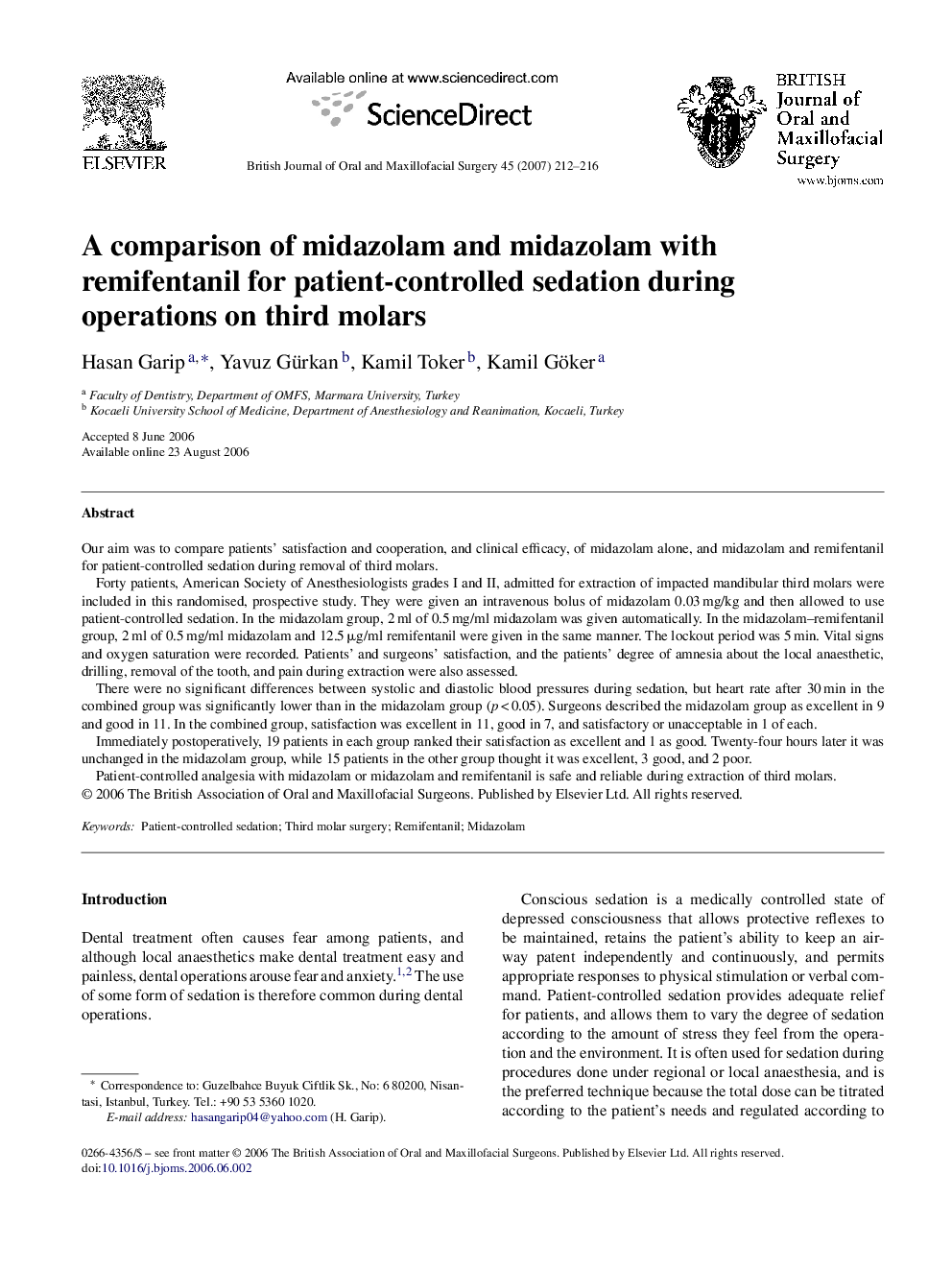| Article ID | Journal | Published Year | Pages | File Type |
|---|---|---|---|---|
| 3125836 | British Journal of Oral and Maxillofacial Surgery | 2007 | 5 Pages |
Our aim was to compare patients’ satisfaction and cooperation, and clinical efficacy, of midazolam alone, and midazolam and remifentanil for patient-controlled sedation during removal of third molars.Forty patients, American Society of Anesthesiologists grades I and II, admitted for extraction of impacted mandibular third molars were included in this randomised, prospective study. They were given an intravenous bolus of midazolam 0.03 mg/kg and then allowed to use patient-controlled sedation. In the midazolam group, 2 ml of 0.5 mg/ml midazolam was given automatically. In the midazolam–remifentanil group, 2 ml of 0.5 mg/ml midazolam and 12.5 μg/ml remifentanil were given in the same manner. The lockout period was 5 min. Vital signs and oxygen saturation were recorded. Patients’ and surgeons’ satisfaction, and the patients’ degree of amnesia about the local anaesthetic, drilling, removal of the tooth, and pain during extraction were also assessed.There were no significant differences between systolic and diastolic blood pressures during sedation, but heart rate after 30 min in the combined group was significantly lower than in the midazolam group (p < 0.05). Surgeons described the midazolam group as excellent in 9 and good in 11. In the combined group, satisfaction was excellent in 11, good in 7, and satisfactory or unacceptable in 1 of each.Immediately postoperatively, 19 patients in each group ranked their satisfaction as excellent and 1 as good. Twenty-four hours later it was unchanged in the midazolam group, while 15 patients in the other group thought it was excellent, 3 good, and 2 poor.Patient-controlled analgesia with midazolam or midazolam and remifentanil is safe and reliable during extraction of third molars.
